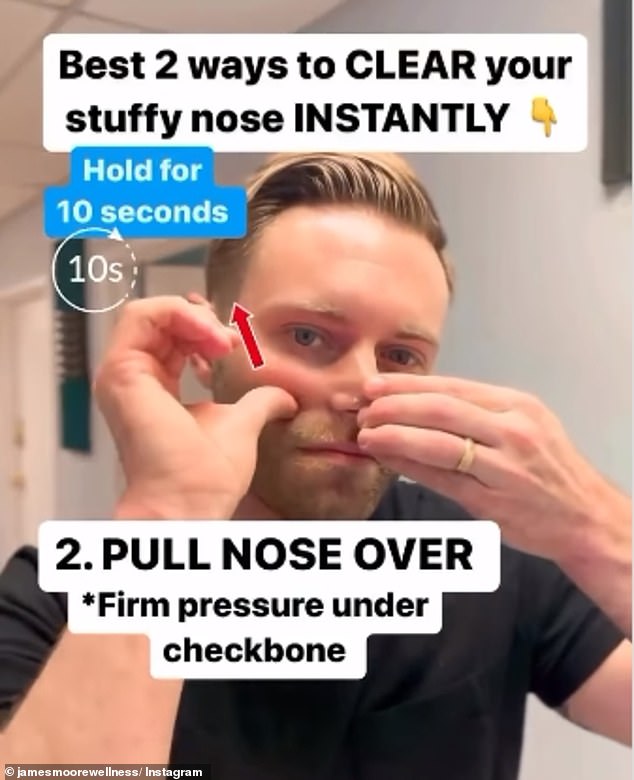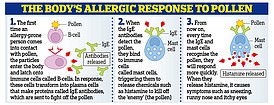Health expert reveals ‘amazing’ hack that IMMEDIATELY clears nasal congestion as hay fever season leaves hundreds suffering with nasal congestion
The season of hay fever, stuffy noses and watery eyes has really arrived.
With pollen counts expected to remain high this weekend, millions of Brits will be competing against youunpleasant sneezing, nose blowing and sinus congestion.
But for those of you who are tired of reaching for tissues, there are a few tricks that can help you clear your stuffy nose “instantly.”
James Moore, a Kentucky massage therapist and social media user, shared his tips on Instagram and TikTok in posts that have been viewed millions of times.
In a video, he suggests that people suffering from nasal congestion start by blocking one nostril and applying “firm pressure” under the cheekbone on the opposite side of the face. He advises people to hold this position for 10 seconds to feel the effects

Another method he suggests is to pull your nose to one side and then apply pressure under the cheekbone. He says again to do this for 10 seconds
In a video, he suggests that people suffering from nasal congestion start by closing one nostril and applying “firm pressure” under the cheekbone on the opposite side of the face.
He advises people to hold this position for 10 seconds to feel the effects.
Another method he suggests is to pull your nose to one side and then apply pressure under the cheekbone. Again he tells him to do this for 10 seconds.
He explained that the technique works by “using massage pressure to increase blood flow to the sinus area.”
However, he warns that this should not be taken as medical advice.
The NHS suggests treating a stuffy nose caused by an allergy with medicine from the pharmacy.
The NHS advises, among other things, taking over-the-counter medications such as antihistamines, clearing your nasal passages with a saline solution and avoiding triggers such as pollen.
Antihistamines work by blocking the effects of histamine – a chemical released by the body when it detects something harmful, such as an infection.
It causes blood vessels to expand and the skin to swell, which helps protect the body.
But in people with hay fever, the body mistakes pollen as a threat and produces histamine, which causes itchy, watery eyes, a runny or stuffy nose, sneezing and a rash.
Antihistamines can stop this reaction if you take them before you come into contact with pollen. If you take them after, they reduce the severity of the symptoms.
Decongestants are another option for hay fever sufferers. They come as nasal sprays, drops, tablets and liquids.
They reduce the swelling of the blood vessels in your nose, making the airways more open.
But hefty doses of antihistamines, nasal sprays and eye drops are not the only ways to relieve hay fever symptoms.
One innovative treatment available through the NHS could spell the end of seasonal misery for some.
Immunotherapy treatment involves placing a single wafer the size of a fingertip under his tongue every day.
As the wafer dissolves, small amounts of the harmful allergen are released. This is then absorbed into the bloodstream.
The idea is that by exposing the body to small amounts of the trigger, it “desensitizes” it, avoiding the immune system overreaction that sets off the cascade that leads to symptoms.
Currently, only around 1,000 NHS patients a year can benefit from immunotherapy for their allergies.
If steroids and other hay fever treatments do not help, your GP may refer you for immunotherapy.
However, experts have called for its wider availability, backed by evidence from recent research.
A study from the University of Southampton found that babies who received immunotherapy for dust mite allergy were 80 percent less likely to develop domino conditions such as asthma at age six.

